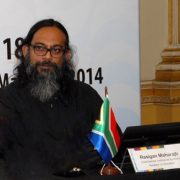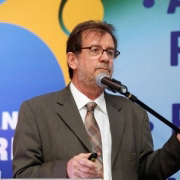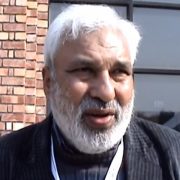Project time line: 2017
This project contributes to improving the capacities and capabilities of BRICS countries (Brazil, Russia, India, China and South Africa) in the areas of research, knowledge sharing and innovation. The BRICS, which collectively constitute 41% of the world population, jointly contributed 23.6% to the world economy in 2017. According to IMF predictions, this would rise to 26.8 percent by 2022. As a geopolitical alliance, the BRICS counterpoises itself against the G7 (Canada, France, Germany, Italy, Japan, the United Kingdom and the United States of America) which form the most advanced and mature capitalist economies of the world.
A key current activity is aligned with pillar five of the long-term strategy for BRICS which ostensibly seeks to develop developmental projects through knowledge and innovation sharing. The ministries of science and technology of the BRICS in their Cape Town Declaration determined the following specific niche research areas allocations: climate change and disaster mitigation (Brazil); geospatial technologies and application (India); renewable energy and energy efficiency (China), astronomy (South Africa); and water resources and pollution treatment (Russia) in 2014.
SciSTIP seeks to determine how each of these countries have fared in research, innovation and other research led development indicators in their allocated research areas and in other areas before (2003 – 2013) and after (2013 – 2017) the allocation by BRICS of these niches. This project is conducted in partnership with the BRICS Think Tank Council (BTTC) and the National Institute for Humanities and Social Sciences (NIHSS).
Research team
 Rasigan MaharajhIERI, Tshwane University of Technology
Rasigan MaharajhIERI, Tshwane University of Technology
 Mario ScerriTshwane University of Technology
Mario ScerriTshwane University of Technology
 José Eduardo CassiolatoFederal University of Rio de Janeiro, Brazil
José Eduardo CassiolatoFederal University of Rio de Janeiro, Brazil
 Alexander SokolovNational Research University Higher School of Economics, Russia
Alexander SokolovNational Research University Higher School of Economics, Russia
 Dinesh AbrolJawaharlal Nehru University, India
Dinesh AbrolJawaharlal Nehru University, India
 Liu XielinChinese Academy of Science
Liu XielinChinese Academy of Science
Science and technology and innovation studies
Research area

